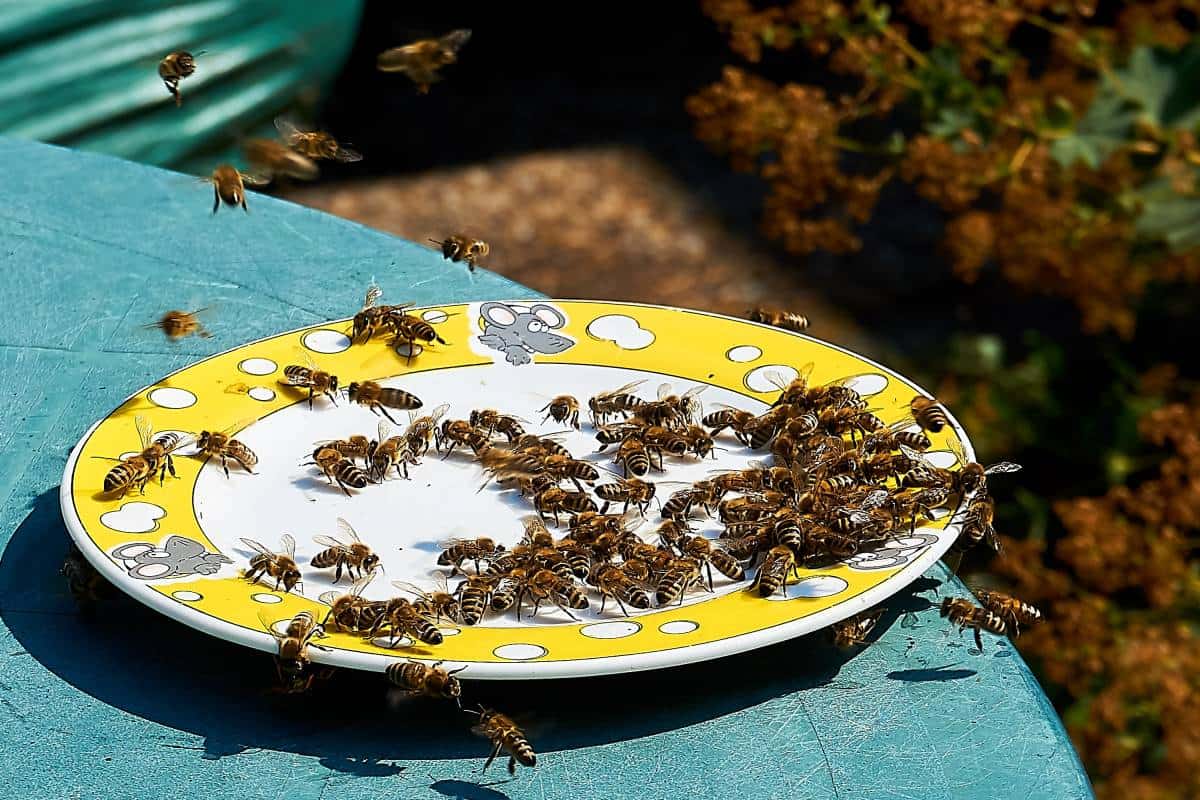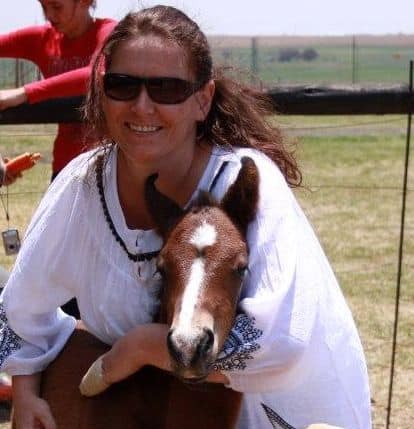Beekeepers often give such conflicting suggestions on whether or not to feed bees, as well as when and what to feed them. Rookie beekeepers often feed their bees because they think of their bees as livestock and feel it is their responsibility to feed them every day. I will set the topic to rest for you.
The truth is that regular hive checks and your plain common sense are often the best way to make the right decision for your bee colonies.

So, should I be feeding my bees? No, in most cases, you shouldn’t – not unless they are on the verge of starvation. Bees should be allowed to find their own food, but there are cases where that might be impossible. If they haven’t much honey over the course of a year, they’ll probably need you to feed them to get them through winter.
Bees are incredibly resourceful creatures who can travel extreme distances – up to 5 miles – every day to search for the nectar they need to make honey.
Most of the time it would therefore not be necessary to feed your bees. However, as fall turns to winter, weather conditions often lead to depleted honey stocks as there is no pollen or nectar to produce honey; what follows is malnutrition which leads to the bees becoming lethargic and unable to fly far to forage.
This cycle will not fix itself. You will have to step in and offer a good food source to give them the energy they need to perform their duties and to keep them healthy until they have replenished their honey stocks.
It is important to note that feeding bees can also draw in pests – like varroa mites, ants, bee moths, small hive beetles, and more – that can carry diseases and contaminate your hive.
Robbing a food source is devastating because an outside colony will attack and kill all your bees in order to secure the food for themselves. Your food source and placement are therefore an essential factor if and when you decide to feed your bees.
Why You Should Feed Your Bees
Nectar and the honey produced from the nectar are what feed and energize your bees. It is the carbohydrate of the bee world. In order to go about their basic daily chores – feeding the queen, building up the nursery, feeding the larvae, performing their guard duties, going in search of nectar to produce more honey – bees need to eat.
Without food, just like humans, they become progressively weaker until they can no longer collect pollen or nectar and they starve.
Some beekeepers do feed their bees because they harvest all the honey their bees make, leaving no stores for the bees during winter when pollen and nectar are hard to come by.
While it may be necessary to feed a new colony so that they can build up some frames of honey, this is the only exception I can live with. In my opinion there is only 1 valid argument for feeding bees, and it centers around the needs of the bees, not the needs of the beekeeper to sell honey. You should only feed your bees if you see they are lethargic, they are not leaving the hive to forage enough, they are not attentive to their duties within the colony, and their supply of honey is running low.
Monitoring Your Hives
The subject of when to feed bees has 3 questions.
Question #1: What are the environmental factors involved that dictate the need to feed?
Depending on where you live, winter can be a real time of crises for bees. If there is snow covering all the plants, they will have no source of pollen or nectar. Your bees will need 60 to 90 pounds of honey left in the hive to survive the cold winter months.
After a major fire, if their supplies are low, you should consider feeding them to prevent them from swarming.
Question #2: At what point should you step in and help by feeding your bees?
If your bees are not performing their functions as industriously as they normally would; if they are weak; if they are not producing honey; if they are not leaving the hive to forage, then you should step in and give them a boost.
Question #3: At what time of year and time of day should you feed your bees?
If your bees honey supply is low, you should feed them in fall and or winter when they will not have a plentiful supply of nectar or pollen.
Bees are also calmer in cool air, therefore, early morning feeds work, however, to avoid robbing it is better to feed in the evening. If the food supply is low, you can continue feeding in early spring – until the plants start growing and flowers are blooming.
The flip side to the question of when to feed would be when to stop feeding your bees. The answer to this question is stop when the bees have enough comb in the frames and the frames are full of honey.
Feed Your Feed with Healthy Nutritious Food
If you need to feed your bees, the best thing you can feed them is what they would be eating, their OWN honey. It is a good practice to set aside some honey from each hive to use as feed when their supplies are running low.
Do not give them store-bought honey or honey from a different hive. Different colonies carry risk factors that you do not want to find out about when it is too late.
A lot of research has gone into the study of bees that are fed their own honey versus other food, and the research has shown that bees that have been fed their own honey live twice as long as those fed with other resources.
If you do not have their own honey, try keep things as natural as possible. Set out flowers (make sure they have not been sprayed with insecticides), fruit, lemongrass, herbs, or pollen patties.
Some plants have antioxidant properties, some boost your bee’s immune system, and some even help repel parasites, so it makes sense to provide a more natural food source.
The nectar your bees use to make honey contains amino acids, vitamins, alkaloids, terpenoids, enzymes, volatile oils, glycosides, and organic acids. None of these are present in sugar. Your last resort should therefore be dry sugar or sugar water or high fructose corn syrup.
This is because these do not contain any of the nutritious factors present in nectar. These are just a quick pick me up remedy. If you must feed sugar, feed organic, refined sugar to avoid pesticide contamination.
Another factor to consider in the question of feeding them their own honey versus feeding them sugar water is the pH levels. The pH level of honey is 3.2 to 4.5. The pH level of sugar water is 6.
Researchers have found conclusively that Nosema, EFB, Chalkbrood, and Varroa – all devastating to bees – thrive at pH levels closer to those of sugar water.
Placing Feeders Away From Pests and Robbers
When you visit a link in this article that takes you to a different website where you can purchase something, I may earn a commission. Read my full disclosure for more details.
The most popular feeder to use is a hive top feeder. This is placed on top of the upper deep brood box, under the outer cover. This offers some protection from robbing. There are plenty of feeders available to choose from.
Conclusion
Always bear in mind that honey is the food source for your colony. You are essentially stealing their food – but we all know why ?.
When you harvest honey, set some aside and label it clearly to remind you which hive each bottle came from. Harvest early enough to give your bees the time to go out to collect pollen and nectar so that they can make enough honey to keep the hive functioning.
An interesting fact: all worker bees are female. In fall and winter, they kick all the males (drones) out of the hive, so that they will have enough food to keep them in tip top shape for feeding the queen. Maybe those gals are onto something…

Di-Anne Devenish Seebregts was raised in an environment where daily life consisted of hiking, environmental conservation, growing fruit and vegetables, and raising poultry for meat and eggs.
She combined her passion for the writing word with her love of the pride that comes with not relying on others. She raised three children (who are now adults) to value the environment, and understand the value of being self-sufficient.
Find out more about Di-Anne on our About Us page.
